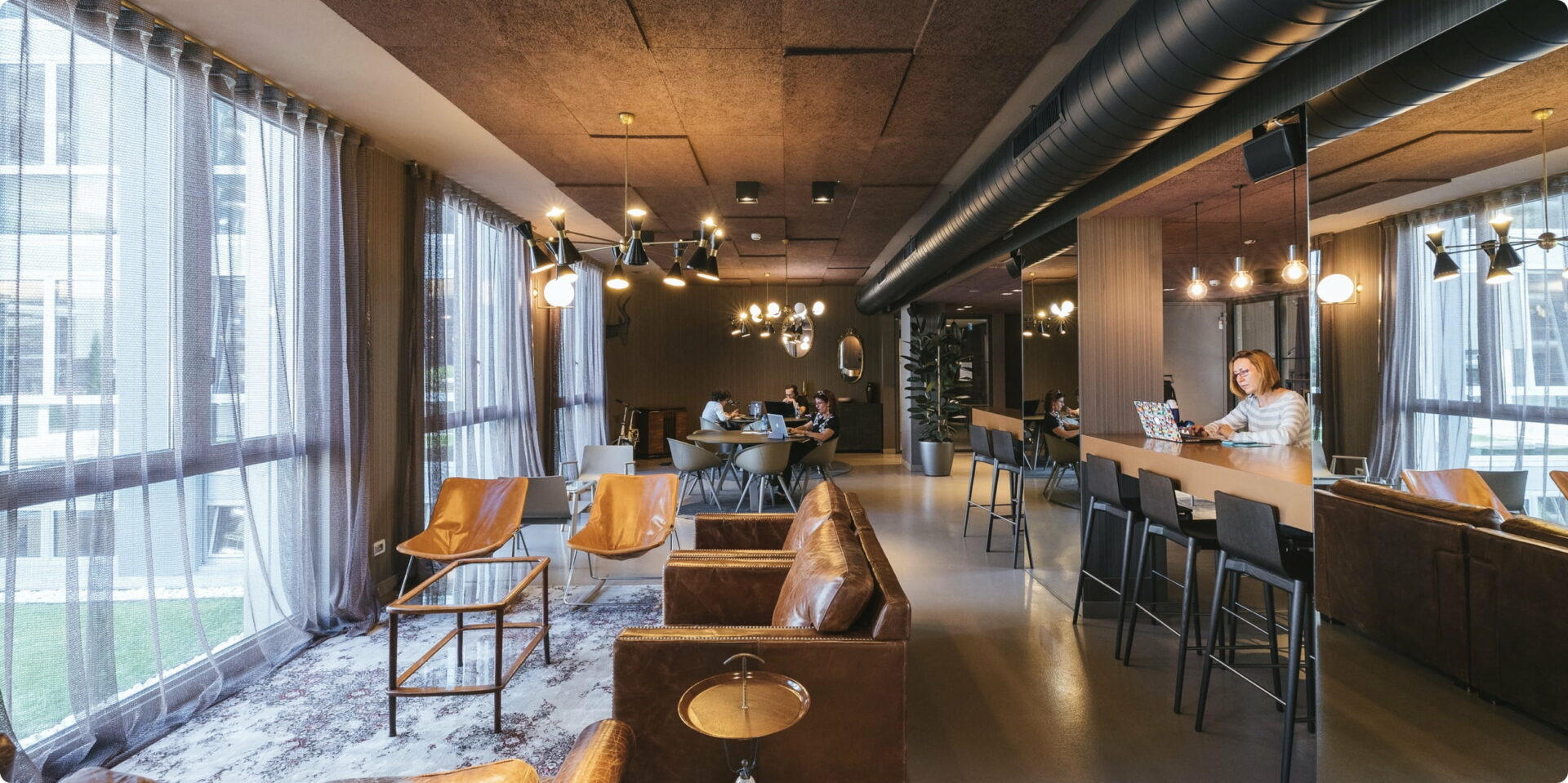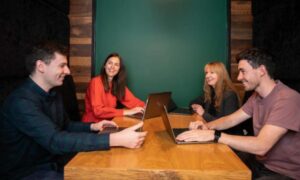Fed up with work from home? Tired of juggling family responsibility with never-ending work Zooms? If so you might be one of the people actually relishing a return to the office. However, one thing is for certain, Covid-19 has accelerated remote working and is creating a situation for employers where they must think about the future purpose of the office.
Will businesses lease out floors to other companies? Will it be an end to permanent desks for staff? Will many businesses redesign their premises? We look at five upcoming trends.
Commons spaces:
If we are serious about human-centered collaboration it is time to move away from old layouts, the cubicle or row of desks, and move towards something that fosters and encourages creativity.
“I think there is a need for commons and cave spaces. We have learned we need and thrive best with both,” says Maeve Houlihan, associate dean, and director, UCD Lochlann Quinn School of Business.
Commons are social spaces and cafe-style co-working – creating a sense of community, proximity, and accessibility so that ideas and relationships can thrive and spur new collaborations even if working on parallel or different projects/tasks.
“The idea of commons is also a more spacious mindset, and this spaciousness is necessary for new ways now. Even where social distancing is no longer an issue, if we are serious about human-centered collaboration as the aspiration to make the most of collaboration and agility, it is welcome and timely to move away from rigid cubicle layouts and rows of cubicle desks,”
There might even be a move towards office furniture that has been designed to allow teams more flexibility, introducing a sense of play into the work environment. This could involve desks, chairs, storage and lounge seating that encourage more movement, collaboration and creativity.
Cave spaces:
Another side of this is the fact that people have gotten used to more of their own space, and learned how there is a need to protect concentration from disruptions at times, and get better at “deep work”’.
“For that cave spaces, whether temporarily bookable studios, quiet zones or smaller offices alongside larger commons or indeed flexibility to work at a distance for certain tasks, are a necessary twin to commons and open-plan working,” Houlihan says.
Research shows that those working creatively often do better when they work in cave spaces – but it’s also vital to have commons close by.
Sound effects:
Noise is often a common complaint among employees, especially in open-plan offices. Having worked from home for so long, with little or no noisy distractions, apart from children that is, the disturbance might be even more heightened for workers returning to the office. Studies have shown that a noisy office can seriously reduce productivity and increase stress.
With the increase in hybrid/blended working teams, more thought will need to go into noise reduction-acoustics and sound issues for offices, especially with the need to cater for the simultaneous mix of in-person and at-distance meetings, events or classes.
“At its simplest videocall booths and bookable rooms, as well as the provision of headsets, have been a popular solution, but the scale of need here will be much more,” Houlihan says.
Connection:
Connecting people is a challenge and obviously, a strong digital backdrop for communications and project management is useful here to move between video, chat, and cloud-based document sharing and archiving.
“But we also do best with boundaries and rhythm and aligned working patterns such as designated days for meetings or whether you work from home on specific days. This will help people to reconnect and have a bit of certainty about being able to see each other in person,” Houlihan says.
Salesforce has written about how they are rethinking their offices to make them more collaborative spaces so that they make it clear to staff that this is the reason workers are coming to the office. Conversely, it’s important to make sure that those who stay remote, for whatever reason, are still integrated.
Shared spaces:
“I am curious if office space can be more multifunctional, in and out of hours, especially in a housing crisis and with a growing desire to build community. Bringing in others as co-shares, whether that is letting out floors to others or offering space to start-ups, arts organisations or non-profits builds a good blend. Ideas get shared, relationships get built, and there is more to gain for everyone from being there. Dogpatch Labs is a great example of this,” Houlihan says.
“I think the key watchwords are collaboration, co-working, and co-existing – balancing spaciousness with connection – and a side order of flexibility and agility and ever-changing configurations.”










